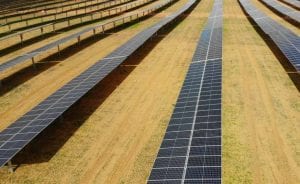A Perth start-up is set to begin trials of its blockchain-based software program that, if successful, could mean the beginning of peer-to-peer energy trading in Australia, in which consumers buy, sell or swap excess solar electricity directly with each other, rather than to the grid for a minimal return.

The company, Power Ledger, will begin the trials later this month, which will be conducted in conjunction with National Lifestyle Villages. The eight week trial will involve 10 households and about 20 people at NLV’s Busselton Lifestyle Village, on the Western Power network.
Jemma Green – Power Ledger’s chair, who co-founded the company with Dave Martin and Jenny Conroy – says the aim of the pilot project is to enable producers and consumers to trade their energy directly, saving money, hassle and maximising the use of rooftop solar.
Blockchain is the software that underpins bitcoin, the virtual currency that has proved popular in many markets. Blockchain is now being seen as a revolutionary new step in many other markets, including in energy.
The technology works, like bitcoin, to identify the ownership of energy as it is generated and then to manage multiple trading agreements between consumers who buy excess solar direct from the original owner/producer, without the addition of market costs and commercial margins.
“It’s a software program that tracks the movement of electricity from point to point,” Green explained in an interview with One Step Off The Grid on Friday. “It handles the financial transactions off the back of it as well.
“Presently, if you’ve got surplus solar electricity you sell it back for a low feed-in tariff and buy it back (from the grid) for a high rate. Using (Power Ledger), you can sell it to your neighbour at somewhere between the two” – less than the uniform tariff but more than you would get from selling it to their retailer, Green said.
For example, rather than exporting excess solar to the grid for 6-7c/kWh and then buying electricity at a rate of 23c/kWh, you can sell it for 15c/kWh, which is around 10c/kWH after grid access costs are paid to the retailer.
“Effectively, we’re cutting out the middle-man to save consumers, and to maximise returns for producers,” she said.
“It’s a win for the people who have been able to afford to invest in roof-top solar, but also a win for customers who haven’t: they will be able to access clean, renewable energy at effectively a ‘wholesale’ rate. Everyone wins.
And in saying that, Green also means the incumbent power industry – as much as this disruptive technology might seem to be cutting their lunch.

Green says network operators in both WA and Victoria have been receptive to trialling the blockchain technology, and WA retailer Synergy is said to be “supportively involved” in discussions on a 2017 trial in the Perth metro area.
“There need to be new commercial models given the use of centralised energy is declining – and battery storage is likely to exacerbate that.”
Green says energy industry incumbents have a window of about two years – the time she and many others estimate it will take before battery storage becomes economic for the majority of Australian households – to sort out their future business models.
“If you see the grid as a trading platform instead of just poles and wires, then you can start to thing about how can consumers be a positive part of that.
“There are quite significant opportunities in this paradigm.
“If you can enable people with solar to sell power to each other, they’ll be sending it across the grid (rather than storing it in batteries) which will maintain the use of the grid – and therefore the value of it,” Green said.
For retailers, she adds, it will be about building relationships with the consumers to facilitate the trading.
“For example, within a strata building you might have the strata own 49 per cent of the solar and battery system, while 51 per cent is owned by the retailer who also provides differential power.”
Green also believes the Power Ledger platform could boost solar uptake, prompting installations that might not have happened before.
“For example,” she told One Step, “you might have a local govt authority that has demand in one area and no roof space for solar.” In situations like this, she says, they could install a solar array in one spot and transfer the electricity generated to where it is needed.
“Consumers don’t like selling their power back to the retailer and buying it back at a higher price.
Using this platform, Green adds, “they can gift the electricity to their mother or anyone else; sell it when they want at the price they want.
“The benefits of distributed renewable energy will flow on to those who, at the moment, can least afford to participate; we think that’s pretty special.”
The Busselton trial will run for eight weeks, after which time Greens says Power Ledger will be announcing another trial in Perth’s south west. The company is also working on securing sites for a trial on the NEM in Victoria, and hopes to enter into commercial trials of the technology in 2017.
“We see this very much as a global product; a product of global significance. So it’s exciting to me that it’s happening (first) in Perth,” Green said, noting that WA was shaping up to be a leader in adoption of new energy technologies.
“They’re really aware of the declining utilisation of the grid and the economic importance of innovating.”








